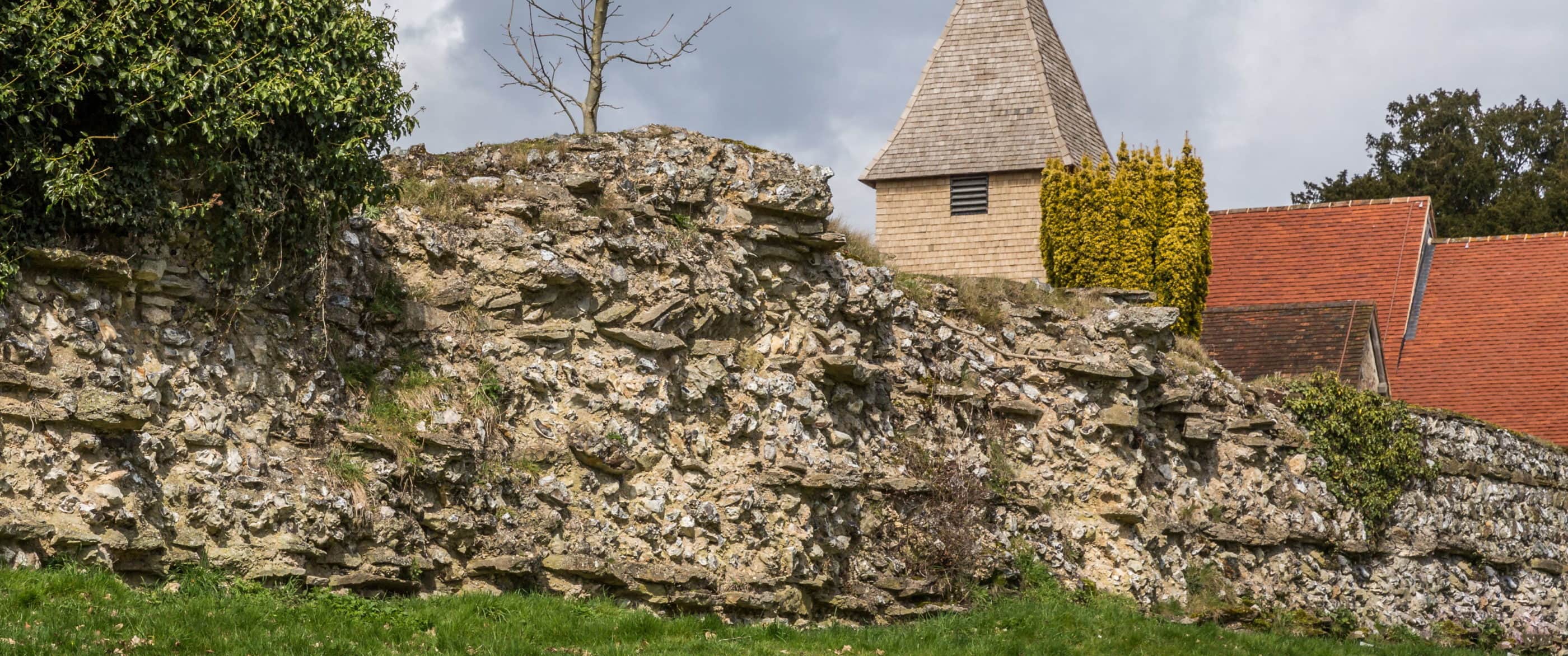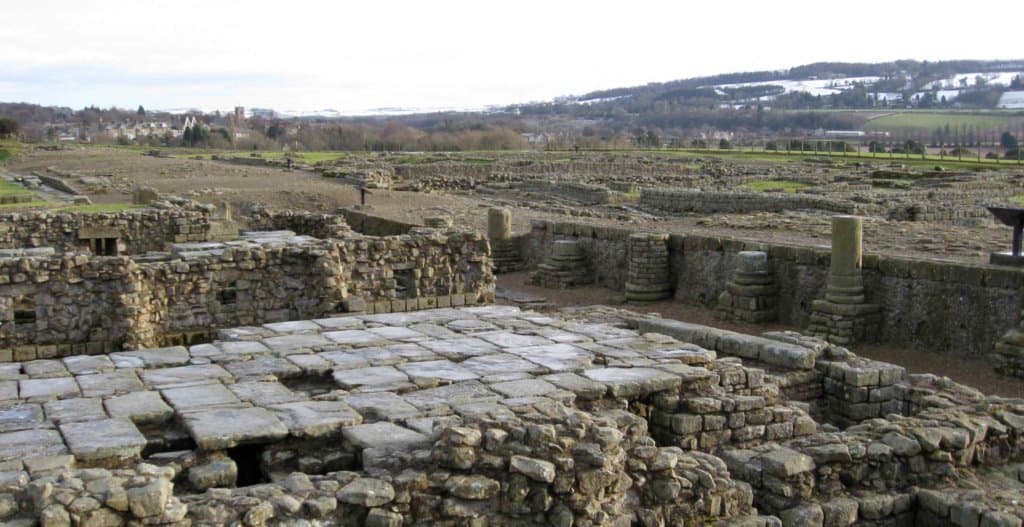Calleva (situated close to the village of modern-day Silchester) was once the centre of the Iron Age kingdom of the Atrebates, however after the conquest of AD43 the settlement developed into a major Roman town called Calleva Atrebatum. Covering a slightly larger area than its Iron Age predecessor (around 40 hectares) and laid out along a distinctive street grid pattern, the town flourished throughout the Roman era and was continuously occupied until the early Anglo Saxon period, a rarity in southern England.
The site has been substantially excavated since the late 19th century, and today Silchester remains one of the best preserved Roman towns in Britain.
The Roman Town
 The entirely of the 40 hectare site would have been covered in a traditional street grid plan, with public baths to the south-east, administrative buildings including a forum and basilica in the centre, and temples in the far eastern corner (interesting enough, situated on the current site of St Mary’s Church). There was also a rest house near the south gate, used by travellers on imperial business, and an amphitheatre situated just outside of the city walls.
The entirely of the 40 hectare site would have been covered in a traditional street grid plan, with public baths to the south-east, administrative buildings including a forum and basilica in the centre, and temples in the far eastern corner (interesting enough, situated on the current site of St Mary’s Church). There was also a rest house near the south gate, used by travellers on imperial business, and an amphitheatre situated just outside of the city walls.
The principal streets of the town would have been crowded with shops and workshops, whilst wealthier people lived would have lived beyond them in larger oranate houses on the southern edge of the town.
The North Gate
Below is a virtual tour of the north gate of Silchester. You can use your mouse to scroll the image around, and be sure to click on the ‘enlarge’ icon at the top right of the image for a full screen experience!
The defences of Calleva Atrebatum were built in two phases, both of which can be seen in the remains of the North Gate.
The first phase began in around AD200 when an earth rampart was constructed, along with five rather imposing gatehouses built out of masonry. One of these gatehouses is pictured below and features a large amount of surviving stone and tile. A recess can also still be seen, indicating where the gate would have been.
The grassed-over remains of the original rampart are also still visible on either side of the gate. In about AD 270 these defences were strengthened with a massive stone wall, perhaps as a preventative measure against the increasing Saxon raids along the southern shores of Britain. Scroll around the panorama below for a more indepth look at the remains of these stone walls.
While the defences offered adequate protection from local uprisings or pillaging invaders from abroad, they also allowed for the local administration to monitor traffic entering and leaving Silchester. In fact, so much traffic was passing through the eastern and western gates (leading to London and Exeter respectively) that a dual carriageway system was built to allow for a contra flow.

The Roman Amphitheatre
Situated just outside Calleva Atrebatum’s city walls is the remains of a large amphitheatre. At its peak, the stadium would have accommodated between 3,000 and 7,000 spectators all gathered to watch gladiatorial combat, bear fighting and a range of other forms of ‘entertainment’.
The original amphitheatre was built sometime between AD 55 and AD 75 and would have been a rather rudimentary structure made out of earth, clay and a wooden wall surrounding the central arena.
Sometime in the 3rd century AD, the amphitheatre had somewhat of a facelift and a stone wall was built around the central arena. In addition to this, two new stadium entrances were built and the shape of the arena changed to the more traditional elliptical layout. This refurbishment suggests that Calleva was thriving in the 3rd century AD.
Little is known about the fate of the amphitheatre after the Roman withdrawal from Britain in 410AD, although it is likely that it continued to be used by the local Britains and – soon after – the Anglo-Saxons.
By the 12th century, it is thought that an early medieval castle stood in the centre of the arena. Some historians argue that this castle was the long-lost ‘Castellum de Silva’ (or small castle in the wood) which was taken by King Stephen in 1147 during The Anarchy. By this time it is likely that the Roman walls of Silchester were being used as a military field camp, whilst the amphitheatre’s earth banks were being used as fortifications for the castle.





